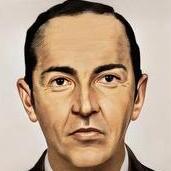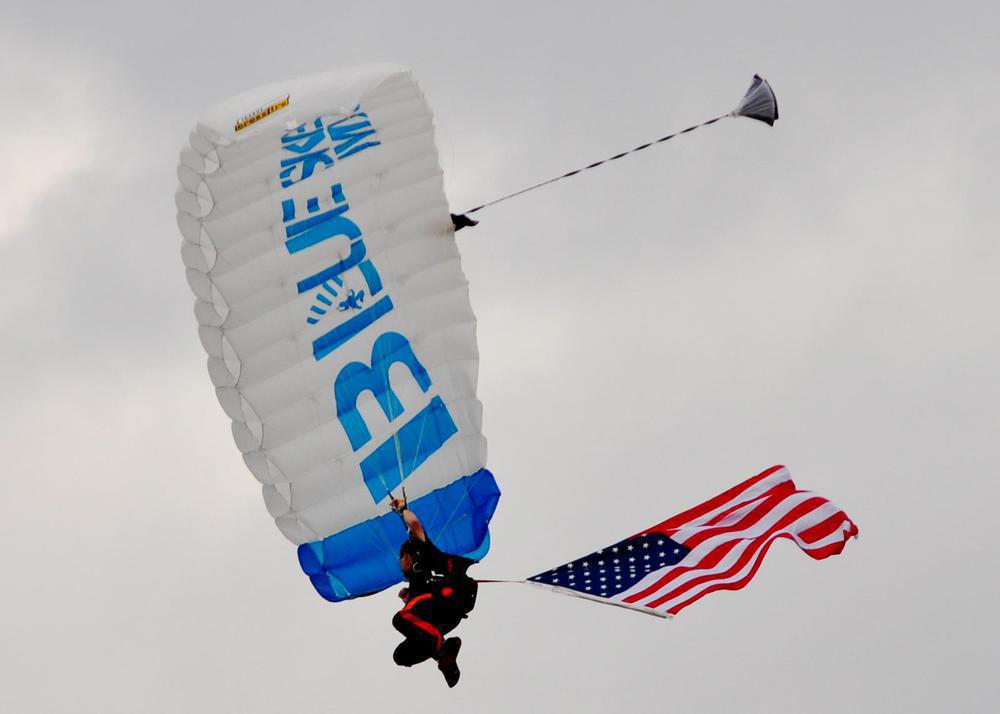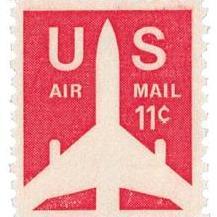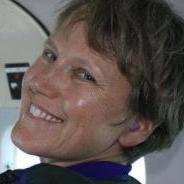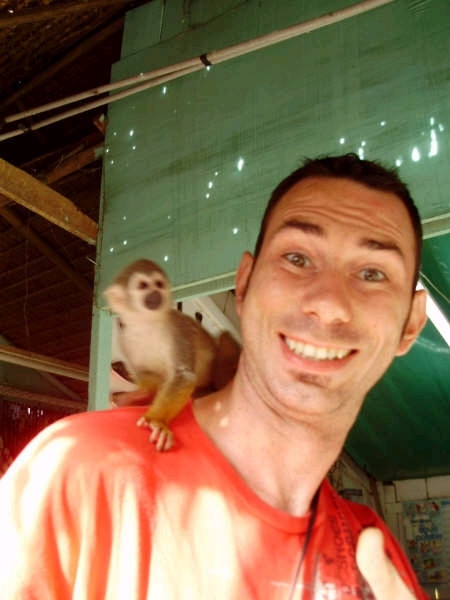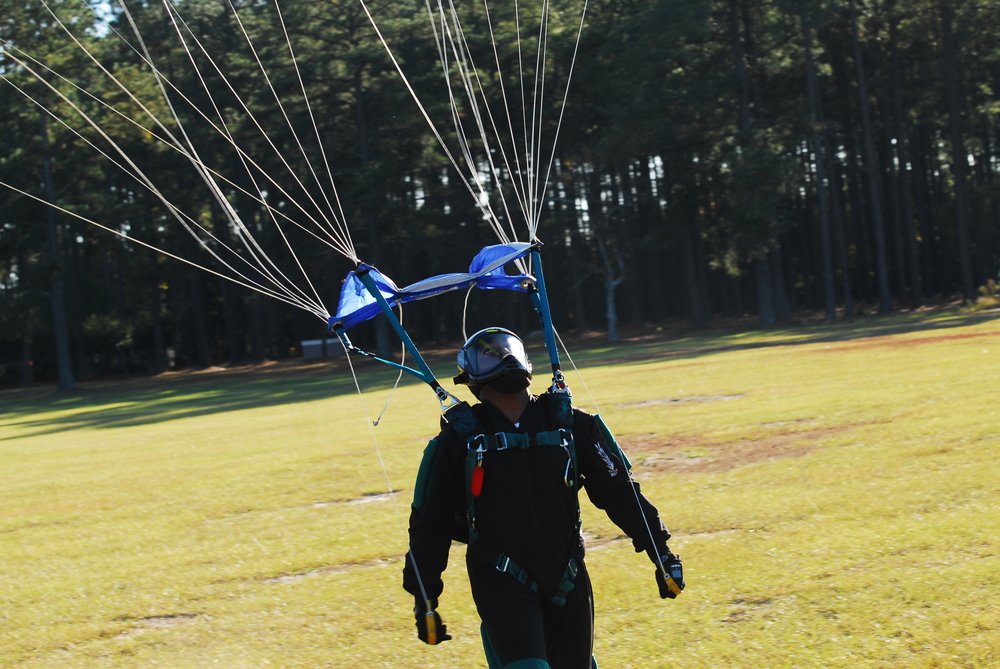Leaderboard
-
in all areas
- All areas
- Adverts
- Advert Questions
- Advert Reviews
- Videos
- Video Comments
- Blog Entries
- Blog Comments
- Images
- Image Comments
- Image Reviews
- Albums
- Album Comments
- Album Reviews
- Files
- File Comments
- File Reviews
- Dropzones
- Dropzone Comments
- Dropzone Reviews
- Gear
- Gear Comments
- Gear Reviews
- Articles
- Article Comments
- Article Reviews
- Fatalities
- Fatality Comments
- Fatality Reviews
- Stolen items
- Stolen item Comments
- Stolen item Reviews
- Records
- Record Comments
- Record Reviews
- Help Files
- Help File Comments
- Help File Reviews
- Events
- Event Comments
- Event Reviews
- Posts
- Status Updates
- Status Replies
-
Custom Date
-
All time
January 20 2016 - June 12 2024
-
Year
June 12 2023 - June 12 2024
-
Month
May 12 2024 - June 12 2024
-
Week
June 5 2024 - June 12 2024
-
Today
June 12 2024
-
Custom Date
12/13/2022 - 12/13/2022
-
All time
Popular Content
Showing content with the highest reputation on 12/13/2022 in all areas
-
4 pointsI've recreated all of the witness and crew testimonies in their unredacted format and put them all in one place. Many of the copies floating around the net look terrible and have gross watermarks, etc. norjak.org/testimony
-
3 pointsThe pilots figured he wouldn't know how fast they were going, so they tried to kill him with speed. McNally "jumped" at over 300mph.
-
3 points
-
2 pointsOr maybe the wingsuit jump with Nebelkopf diving directly at me, me back flying, as my audible warned me I just went under 2500 ft. Nah, that wasn't it. I'm sure I was fully open by 1100 ft. Nice chat with the S&TA after he grounded us for a couple of days.
-
2 pointsIn addition to her 11/30 interview Mucklow gave a second FBI interview over two days at her home: 12/1-2/71 Do you have it? The crew interviews are in The Vault on Shutter's site. ... Interview of Mucklow 12/1-2 at her home in PA: Tina Mucklow, residing at the home of her family, provided the following information: On November 24th 1971, while employed as a stewardess for Northwest Airlines, Ms. Mucklow was on Flight No. 305 which originated in Washington DC, and arrived at Minneapolis Minn about 10:00 a.m., and Ms Mucklow boarded shortly thereafter. She says the crew for her flight was Pilot Wm Scott, Co-pilot Wm ‘Bill’ Rataczak, Third officer and Engineer Harold ‘Andy’ Anderson, Senior Stewardess Alice Hancock, B Stewardess Florence Schaffner, and finally C Stewardess (herself) Tina Mucklow, the junior member of the crew. Mucklow advised that her flight departed Minneapolis at 10:35 am CST with a light load of less than half its compliment of passengers, flew to Great Falls, Montana, then to Missoula, Montana, and then to Spokan, Washington, and then Portland, Oregon. She said that the aircraft departed Portland at 2:53 pm Pacific Standard Time, and arrived two hours and fifty three minutes later at Seattle, Washington, which is normally a 36 minute flight. Just before the Second Officer (Rataczak) gave the word for takeoff from Portland, Hostess Schaffner took a beverage form to the aft jump seat. There was a man in seat 18-E middle after passenger seat, and as Mucklow faced the barrier strip, she observed Hostess Schaffner dropping a note, stand up and she unfastened the barrier strip and sat down next to the man in seat 18-E. Mucklow says that Hostess Schaffner appeared ‘emotional’ in that she was trying to speak to her (Mucklow), was moving her lips, but other than a gasp, no other words came out. Mucklow picked up the note lying at her feet and read it. To the best she can remember, it said: “Miss. I am hijacking this plane. I have a bomb. Sit next to me.” The aircraft lifted off the runway at 2:58pm and Mucklow used the interphone to advise the pilot the plane was being hijacked. She saidL :We’re being hijacked, he’s got a bomb, and this is no joke.” Mucklow replaced the phone and leaned down in the isle near Schaffner and saw her writing something on an envelope. After Schaffner finished writing she said to the man next to her that she would take the note to the cockpit. Mucklow says she asked Schaffner if she wanted her to take the note forward and Schaffner said “no”. Mucklow asked “Do you want me to stay here?” and the man replied, “yes”. Schaffner then took the note forward to the cockpit. Mucklow sat next to the man and shortly thereafter he opened a black cheap appearing imitation leather attache case and showed her a device, with eight red cylindarsand a wire running from the cylindars toward a large 6x8x2” battery. The wire had a red plastic coating on it except for the last inch which was bare and the man was holding between his fingers. He told (me) it was an electronic device and suggested the aircraft radio be used as little as possible. He then said ‘he didn’t think radio transmissions would bother it, but he wanted the crew warned’ . (After these statements from the hijacker) Mucklow called the pilot over the interphone and advised him of the device (and the hijacker’s statements) and from that point on she acted as the communications intermediary, between the hijacker and the pilot using the interphone. During one message to the pilot the hijacker specified that all of the previously requested items be at the airport when he landed. Mucklow later learned that the note which Schaffner had carried to the pilot contained a list of (specific) demands. The hijacker later told (repeated to) Mucklow that he wanted $200,000 in circulated US currency, two back and two front parachutes, and fuel trucks to meet the plane when it landed. One of the specific demands that he made was that the fuel was to come first and start fueling the plane immediately. Everyone in the plane was to remains in their seats and he indicated that Mucklow was to be the liaison and the one to go out and get the money and the parachutes. After fueling was completed and the money was on board, the hijacker indicated that the passengers would be released, and the last item to be brought aboard would be the chutes, and that only the crew members were to be aboard and they must stay out of the isle and remain in their seats. During the flight from Portland to Seattle Mucklow had light conversation with the hijacker. She asked him where he was from but he became upset and said he didn’t want to answer that. . She steered the conversation into remarking ‘that if they were going to Cuba airline personnel were advised to warn passengers against buying Cuban rum or cigars because US Customs would confiscate them when they returned to the United States. (Mucklow says) the hijacker laughed and said ‘they weren’t going to Cuba, but she would like where they were going’. He asked her where she was from and she told him she was from Pennsylvania but was living in replied that ‘Minneapolis, Minnesota is very nice country’. refused everything. She asked him why he picked Northwest Airlines to hijack and he laughed and said “It’s not because I have a grudge against your airlines (plural), it’s just because I have a grudge”. He paused and said ‘that the flight suited his time, place, and plans.’ Other conversation centered around personal habits such as smoking and he asked her if she did and she said she used to but quit, and he offered her a cigarette which she took and smoked. She asked him if he wanted any food or drink and he During the flight from Portland to Seattle, a male passenger started aft down the isle and Mucklow met him at about Row 14. She asked him what he wanted and he replied ‘he was looking for a sports magazine’. Mucklow took him to the aft section of the plane immediately behind the hijacker where they looked and finally he accepted a New Yorker Magazine, and returned to his seat. After the man was seated Mucklow returned to seat 18-D, next to the hijacker, and he said “If that is a Sky Marshall I don’t want any more of that”, and Mucklow reassured the hijacker it wasn’t (a sky marshal) and further ‘that there are no sky marshals on this flight’. A short time later the pilot called and asked Mucklow to ask the hijacker if he wanted the passengers informed of the situation, and the hijacker said “No”. The pilot replied that he would come up with an excuse to explain the extension of the flight beyond its normal 36 minutes. It was at this point that the hijacker instructed Mucklow to tell the pilot he wanted his note and envelope back. He also wanted the empty matchbook cover from which he had been lighting his cigarettes; Mucklow had thrown that into the trash pouch on the seat in front of 18-D where you would normally throw personal trash. Mucklow indicated he had another similar book of matches and the cover was blue and said “Sky Chef”. He retained that book of matches in his pocket. While in the holding pattern over Seattle the hijacker noted: ‘It is 5:15 and we are still waiting. I wanted everything by 5:00 o’clock!’ Mucklow called the pilot on the phone and got an update and informed the hijacker ‘we are waiting for the front pack chutes to arrive at the airport from McChord’. The hijacker replied: “McChord is only 20 minutes from Tacoma; it doesn’t take that long.” Mcklow called the pilot again and the crew said the chutes were ‘en route’ and the cockpit requested permission from the hijacker to start the descent without the chutes being present at the airport. The hijacker said “yes provided the chutes are there by the time the fueling is completed”. A few minutes later the pilot called back and advised ‘the chutes have arrived and we are going to land’. The flight landed at Seattle International Airport at 5:45pm Pacific time. Prior to the landing the pilot wanted permission from the hijacker to park the aircraft away from the terminal and the hijacker said “ok”. The pilot said he would park in a semi-lighted runway not being used and this pleased the hijacker. While the aircraft was being taxied to that area Mucklow asked the hijacker’s permission to move five passengers away from the area of seat row 18 and the hijacker approved of that. Stewardess Mucklow stood at Row 15 in the middle of the isle to make certain no one came aft. When the aircraft stopped the pilot got permission from the hiajcker to let the fuel trucks approach the plane. The stairs truck came to the front door and Mucklow left via the front door and went to the car carrying the money, chutes, food, maps, and a radio for cockpit communications.. At this time the hijacker got up and went to the aft lavatory. When Mucklow returned the hijacker was back in his seat. Mucklow dragged a white canvas money bag down the isle (right in fron ot the passangers) to where the hijacker was sitting and placed it on seat 18-D next to the hijacker. The hijacker looked through the bag and said that it was ‘now alright for the passengers to get off the plane’. Mucklow notified the pilot and the pilot made an announcement ‘the passengers could now leave the aircraft’. After the passengers left Mucklow asked the hijacker if he wanted her to get the other items waiting outside and he said “yes”, but he wanted the other crew members to remain seated. Mucklow then left and brought in one large parachute (back pack). The hijacker told her to lower the window shades, which she did. Mucklow then left again and brought in two small chutes (front packs). Her next trip she got the last ‘big chute’ and placed it with the others in Row 18. At this time Mucklow handed him a sheet of instructions on ‘how to jump and use a parachute’ and he said ‘he didn’t need that’. Prior to all of this Mucklow asked the hijacker if he wouldn’t rather have one of the cockpit crew (men) get the chutes, but the hijacker told her ‘they aren’t that heavy and she wouldn’t have any trouble’. When Mucklow returned to the plane with the last back pack chute, she saw that the hijacker had one of the small chutes open and was cutting nylon cords out with his pocket knife. He took the nylon cord and wrapped it around the neck of the money bag numerous times and then he wrapped it a few times from top to bottom, and with the same piece (of cord) he made a loop like a handle at the top. This nylon cord was pinkish in color. He appeared irritated that they hadn’t given him a knapsack for the money as requested, and after trying to put the money in an unfolded parachute, he decided to leave it in the canvas bag (and fabricate a holding line for that, instead). She told him that they had crew meals and maps, and requested permission to go get them. He replied “yes” and Mucklow went to get the items and returned taking a seat next to him. He said, “We’re going to Mexico City, gear down, flaps down, you can trim the plane to 15, you can stop anywhere in Mexico to refuel, but not here in the United States. The aft door must be open and the stairs down. The altitude, under 10,000 feet, they know they can’t go over that. Cabin lights out and everyone is to be forward of the first class curtain.” Mucklow relayed these instruction to the pilot. (Stewardess Hancock appeared!)) Hancock came back to where the hijacker was seated and asked if she could get could get her purse. The hijacker said she could come on back, he wouldn’t bite her. Then she asked if the stewardesses could get off and he said “yes” About one hour had passed since landing and Mucklow was taking information for the hijacker from the pilot (???) and she told the other stewardesses to go ahead and she would be with them in a second, and they went forward to the cockpit. She told the hijacker that the plane ‘could not’ take off with the ladder down and he said in a low voice: “Yes they can, but the cockpit can put it down after they get airborne.” [important passage] She told him that the stairs had to be let down from the rear and at this point he appeared disturbed because of the duration of time the refueling was taking, and her told her to stay (with him). (Finally) Just prior to takeoff he became very excited because they had been on the ground over an hour so Mucklow relayed his displeasure to the cockpit and they answered ‘that they had only 1500 pounds of fuel left to be put in, and this was about one-quarter of the total capacity’. Mucklow relayed that to the hijacker and he calmed down. She then told him it would be a few minutes longer while they filed a flight plan and he replied: “Never mind. They can do that over the radio once we get up. Let’s get the show on the road!” The cockpit called to address the issue of Mucklow lowering the stairs once the aircraft was airborne; they told her to use the ‘escape rope’ to secure herself. [The escape is located …?] Mucklow related this to the hijacker and he vetoed the idea saying “No”. He said he didn’t want her to go back up front or them to come to the back. Mucklow asked if the Second Officer could shut the front door and he said “Yes”. Mucklow got up and opened the rear door and locked it open (as per hijacker’s request) and the pilot started the engines and a short time later began taxing toward the runway. During the taxi Mucklow said, “You know we have oxygen´and the hijacker replied, “Yes I know where it is. If I need it I will get it.” Mucklow asked him to cut some nylon cord from the parachute for her to use as a safety line when opening the rear ladder (with the door open) and the hijacker said: “Never mind” that he would (open it himself). She showed him where the control panel was and the controls and how to do it, and she reminded him to put the ladder up before landing or the aircraft would be damaged and could not take off again. She returned to seat 18C, he to 18E, the money was in 18D, and the bomb was in 18F. [so he did not have personal control of the bomb the whole time!] The plane took off (with the rear door ajar) and she held her ears because of the loud noise from the engines. Approximately four minutes after take off he stood up and told her to go the cockpit and close the first class curtain, and for no one to come back behind the curtain. The lights were out in the rear compartment and she went forward, faced the curtain, (and turned around and looked?) and the last time she saw him he had a nylon cord tied around his waste and he was standing in the isle. Before she secured the curtain she called back and pleaded with him to take the bomb with him or disarm it before he left. After securing the curtain she entered the cockpit and approximately ten minutes later, one of the officers received an interphone call from the hijacker advising that he could not get the rear stairs down. [could he have bailed without the rear stairs being down?] The pilot responded that he would ‘level the aircraft and reduce the air speed. And a short time later the red indicator light went on on the second officer’s panel indicating that the stairs had been lowered, and approximately five minutes after the first call one of the officer’s received another call from the hijacker, which was the last communication anyone had with the hijacker. Before descending at Reno, Mucklow called repeatedly over the intercom system to the hijacker to cooperate, that the aircraft must land. The last message was: “Sir, we are going to land now, please put up the stairs. We are going to land anyway, but the aircraft may be structurally damaged and we may not be able to to take off again after we’ve landed”. The pilot landed the aircraft and parked it away from the terminal. Mucklow and the pilot entered the cabin area and called to the hijacker a number of times to cooperate, and we asked for instructions (from him). There was no answer so we went behind the curtain. Mucklow went to the galley but did not see the man, and at the same time we flipped on all of the cabin lights and there was no one there. The Captain and Mucklow ran to the rear of the aircraft and looked for the bomb. Mucklow The Captain and Mucklow ran to the rear of the aircraft and looked for the bomb. Mucklow looked in the aft lavatory and checked the oxygen bottles compartment, then they began crawling up the isle looking under seats fpr the bomb. While she was doing this the first officer was coming down the isle from the cockpit on his knees with a flashlight looking under seats for the bomb. Then after a few more minutes the first officer tol her to get off the airplane which she did. Mucklow walked between two blue lights down the taxiway away from the aircraft. It was dark. Mucklow recalls that upon entering the after section of the aircraft she saw the one chute that had been cut open and another chute. One was on Row-17, the other on Row-18, both on the left side of the ship. Mucklow said that about five minutes after she left the aircraft three cars came to the nose of the plane. Mucklow described the hijacker as follows: Sex, male. Race, white. Age 44-46. Height 6’. Weight 180-190 lbs. Complexion Medium to dark. Build medium. Hair Dark, flat, straight, sideburns narrow, mid ear. Eyes not observed. Characteristics: Wore sunglasses, dark plastic wrap around frames. The man impressed her as being an executive type by his dress, special mannerisms, and consideration that he exhibited for her while he was on the aircraft. The only time she can recall any actual threat to her life was during the flight from Portland to mentioned to her to impress on everybody that would use the device he had, that he would not be taken off the plane. Mucklow could detect any accent in his voice. Clothing: Dark brown suit possibly with thin black stripes, brown socks, brown ankle length pebble grain shoes, not type shoes (loafers). She does not recall any rings or facial scars, marks, or tattoos. Weather: Mucklow advised that her recollection of the flight from Seattle (south) was that the weather was extremely murky and that the ground could not be seen.
-
1 pointTrump is going to run as an independent. He’ll suck 20-30 million votes away from the GOP. He kills everything he touches and the GOP is no different.
-
1 pointWhich one. How about doing a demo with 1400 a foot ceiling exiting over a lake. I landed right on target.
-
1 pointWhen Reno was in play he decided to jump ASAP.. being on the plane when it landed was risky, he had the money and the opportunity to get out. Jumping closer to take-off would give him more time.
-
1 point
-
1 pointHahneman had quite an adventure, he forced the plane to land again after he didn't like the $100 denomination and then he had to switch planes later when there was some type of hydraulic issue I believe. And he was still able to pull it off and land safely with the money -- over the jungle right ? Whether he was Cooper or not, he seems to have had the most challenging circumstances of all the 727 hijackers.
-
1 pointThanks, yeah I have always been in the camp that he just wanted to the plane to head south. But you make a strong case to consider for really wanting to jump in Mexico, I am certainly not closed to it. My biggest question to it is why he didn't pick an originating flight closer to the boarder if he wanted to go to Mexico.
-
1 pointThat’s always been my take. He was just trying to say something comforting. I often think we read into these lines too much. It’s like the grudge line. It’s quite possible that “no Miss, I don’t have a grudge against your airline, I just have a grudge” was a cooler sounding and better alternative than “no Miss, I don’t have a grudge against your airline, I’m just a dirty thief.”
-
1 point
-
1 point"Forget yachts and private jets. The new status symbol in today’s world is a second passport, or at least a second residency abroad." So Joe's yacht and fleet of A/C have nothing on you!! Comparing Taxes with Citizenship by Investment can be The Zero-Tax Citizen: Tax-Friendly Second Passports
-
1 pointAfter spending the day making 10 or so wingsuit jumps with a Spectre 120, I quickly switched canopies for the night jumps. To a Katana 120. I only had 10 or 12 jumps on a Katana 120 at that time. I'm VERY lucky I didn't break myself. Being berated by someone at PD who had next to zero knowledge of me, my canopies, my experience, or anything didn't help either.
-
1 pointGeneralized corruption is so much a problem in most of S America that there is far less opportunity for a “little guy” to get ahead. Public schools have been cut until they’re not competitive, and the subsidized public universities are really only available to private school students because the public schools just can’t compete. Wanna see the future of education in America if we continue with subsidizing other education at the expense of public. Yes, rich kids don’t go there often. But y’know — the more they do, the better the chances of the other kids rising. Wendy P.
-
1 pointI think "The Ds" are the whole Hunter story now are they not? I like how this has come full-circle. How many threads have you started on here predicting the demise of Musk, now you're sharing his trolling just because you like the flavour of the Kool-Aid he's serving. When your guiding ideology is "Dem's Suck", you have to twist yourself into some interesting pretzel's to get your point across. Maybe Hunter did some shit and if he did he should face the consequences...that said, while Musk is a genius in many areas, one of the things he's famous for is over-promising and under-delivering. And once again, you're gloating based on an unreliable prediction. Learn your fucking lesson dude. Anyway, I think we're all in agreement that Hunter should no longer be President so at least there's that.
-
1 pointJumped the sunset load on a Saturday night, after landing when straight to the bar leaving my parachute unpacked. Returned from the bar after 12 hours drinking at 8:00am the next morning, packed my chute in a rush and jumped the first load on the Sunday morning. That was 30 years ago, I wouldn't last 12 hours in bar now. ;-)
-
1 point
-
1 point
-
1 pointIntro As there are not a lot of ressources regarding a transition from skydiving to paragliding/speedflying available online, I decided to share my experiences and impressions in this post here. Even if you are not planning to get into paragliding yourself, it might still give some interesting insights. If you like, I can keep you updated on my journey. About my skydiving background Originally from Austria, I started skydiving in southern Germany back in August 2012 and got pretty hooked on it. After spending every weekend at the dropzone for about a year, I decided to quit my regular job, move to the dropzone and pursue a career there, although I always had to support it with at least a part time "normal" job. Living off skydiving alone is almost impossible within Germany. After about two years (as soon as legally possible) I got my coach and tandem instructor rating. I was able to earn money with skydiving from that point on, mainly doing videos, tandems and coaching jumps. My AFF rating followed soon after. My favourite discipline in skydiving has always been canopy piloting, why I invested lots of time, money and effort into that. I quit skydiving in the beginning of 2020 as I was starting to burn out after 7 seasons of 7-day-weeks during the summer and moved back to my origin in the Alps of Austria at the beginning of this year. Alltogether I did about 3500 jumps of which about 2000 have been on solo-canopies. My canopy progression was: * PD 170 (~150 jumps) * Pilot 150 (~150 jumps) - started working on high-performance landings with that canopy * Pilot 132 (~200 jumps) * Katana 120 (~200 jumps) * Velocity 96 (~300 jumps) * Valkyrie 84 (~1.000 jumps) - loaded with up to 35lbs of extra lead (total exit weight around 220lbs) (sample landing) Do not take my personal path as advice for your own downsizing. I went through some downsizing steps rather fast, but keep in mind that I did many of these jumps in shorter timespans than many other people and always had direct mentoring from more experienced pilots available. In retrospective I have to say, that the step from the Pilot 132 to the Katana 120 was the most challenging. My paragliding experience until now I started my training at Cloudbase, a professional, commercial paragliding school in Zell am Ziller (Tyrol, Austria) - huge recommendation by the way - last Saturday and completed my final exam yesterday. Usually training takes a bit longer (40 flights) but due to local regulations a shortcut for licensed skydivers is possible (15 flights, although practically not appropriate in many cases). Theoretical instruction is easy, but covers topics that many skydivers have likely never had any contact with. It might have helped that I also hold a commercial pilot license for airplanes and have quite some knowledge regarding meteorology and basic aerodynamics, but I doubt that my skydiving experience gave me an advantage in that area. During training (and some test flights today) I had the chance to fly the following paragliding wings (surface area in brackets although less relevant): * Mescal S (240 sqft) * Masala S (235 sqft) * Susi 23 (213 sqft) * Susi 21(190 sqft) * Kode P 18 (173 sqft) * Tonic 2 S (172 sqft) How do paragliding wings compare to skydiving canopies? I was surprised how much performance even large student paragliding wings offered in comparison to skydiving canopies for students. While a skydiving canopy for students (and to be honest - also most intermediate skydiving canopies) allows the pilot to hang in the harness like a bag of water and yank on the steering lines without any requirement for sensitivity, a paragliding wing requires immensely more coordinated inputs by harness and brakes to achieve an acceptable amount of control. I suppose a docile student paragliding wing would likely still not kill you, but it will be a very uncontrolled ride, if you fly it the same way a skydiving canopy allows you to fly. Techniques required to fly real high-performance skydiving canopies transition very well to paragliding. From the first flight on paragliding felt very natural and I had the feeling of having a good amount of control over the wing. I got lots of compliments to be the very first skydiver at the school with sensitivity for brake inputs. Aside from techniques like doing big ears, that are not used/available in skydiving, a huge difference is the possibility of (unintentionally) inducing extended rolling and pitching oscillations and the inputs required to stop these oscillations. Standard skydiving canopies do not really require such inputs and will quickly self stabilize (or at least keep the oscillations low). High-performance skydiving canopies require such inputs but still stabilize quicker than paragliding wings. While angle-of-attack control is not necessarily required to safely fly a skydiving canopy, like it is on a paragliding wing, it certainly allows much better flight path control even on less performant skydiving wings (Did you ever feel your controls become "mushy" after recovering from a turn input? Surprise! There's ways around that...). Some skydiving pilots might bring that skill, some might not. Paragliding wings are a lot easier to flare than their skydiving counterparts. I did not see a lot of really bad flares during the course on my coursemates without any pre-experience. That is likely due to the much lower sink rate and more lift that paragliding wings provide. I would not expect any skydiver to have much trouble correctly flaring a paragliding wing. Paragliding wings seem a lot less critical regarding low turns. While even very docile student skydiving canopies react with a good amount of dive to any turn, I have seen safe turns at heights that sent shivers down my former skydiving instructor spine during the past week. There are other dangers that come with paragliding wings, but the risk coming with low turns seem a lot lower with paragliding. I do not have any numbers on that feeling, so take it with a grain of salt. Conclusion I have a hand full of paragliding flights by now, so my opinion might either be false or have to be revised by myself in the future. High-performance canopy flying experience transitions very well to paragliding and should allow you to feel comfortable on a paragliding wing quickly. Controls are different but follow very similar principles. If you got the feeling for a high-performance skydiving canopy, you will likely have the feeling for a paragliding wing. At least a docile one (like to ones I used to fly during the past week) and at least in my case. I doubt that limited, other skydiving experience will give you a huge advantage on paragliding. Some things might feel similar, certainly taking away a good amount of stress. Some of your habits might be very counter-productive. And it is very well possible that you will have to seriously extend your "toolbox of canopy control". Recommendations In any case, do not assume that you know how to fly a paragliding wing, because you know how to control a skydiving canopy. It's different. I for my part decided to go with the Tonic 2 S for now. It's very slow in comparison to the Valkyrie 84 I used to fly, but it still behaves reasonably agile and I have the feeling that I got a good amount of work to do until I can fly it perfectly to its limits. It outperforms similarly sized skydiving canopies by far. Speedflying is my goal, but I do not see any reason to rush it. Doing some paragliding training could be a good addition to becoming a great skydiving canopy pilot. I can see paragliding skills and knowledge transition extremely well to skydiving canopy control, if you already bring some skydiving experience. Paragliding training is super cheap in comparison to skydiving. And it's a huge amount of fun.
-
1 pointI made a bet with Carol Clay. Uber stooopid! We were up late partaking in some DZ shenanigans and I bet the Queen that she wouldn't make load 1 in the morning. My dumb ass stayed up until... hell I don't know. And anyone that partied at West Point back in the day knows what I'm talking about. I think I got about an hour nap and somehow showed up to dirt dive with Carol. I fell asleep on the ride up and I do not remember the jump whatsoever except that Jason was there. When we got down I crawled into a corner of the hanger and passed out for most of the day. Never again I swore... but then there was another boogie! Damn I miss that woman.
-
1 pointI hope that remains the stupidest thing… jumping impaired a couple of times in the 1970’s or 80’s probably counts for me. Wendy P.
-
1 pointThe thing that could happen is that you stow the slider using the keeper and afterwards decide to cutaway. In theory it could cause a slight delay or completely fail to release, though I've tested mine on the ground and it takes very little force for it to release. Not 100% related to your question, but I would worry more about this than about magnetic interference (though I'm using a magnetic keeper myself and don't think it would cause issues).
-
Newsletter

